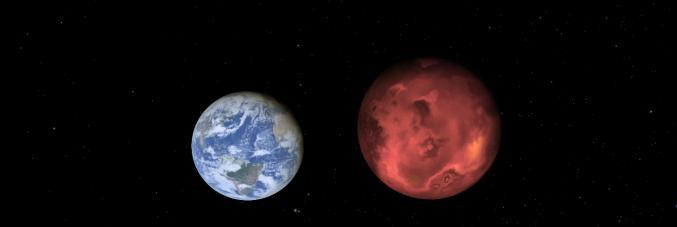
TOI-1807b, the youngest exoplanet with an ultra-short orbit
29.06.2022
Was discovered in 2020 by NASA’s Transiting Exoplanet Survey Satellite (TESS) telescope and is known as one of the few planets to have a period of revolution around its star in less than one day; it is also the youngest ultra-short period (USP) planet ever discovered (its orbit around the parent star lasts only 13 hours). An international research group from the National Institute of Astrophysics (INAF) and the University of Padua share the TOI-1807b exoplanet discovery in the study, The GAPS Program at TNG. XXXVII. A precise density measurement of the young ultra-short period planet TOI-1807 b.
The HARPS-N spectrograph installed on the INAF Galileo National Telescope (TNG) in the Canary Islands obtained the new data to compare it against the orbit of Mercury in our Solar System. Mercury is the planet closest to the Sun, orbiting it every 88 days, while a year on Earth lasts 365 days.
BD + 39 2643, an active K dwarf star (colder than the Sun) at the center of this planetary system is itself very young, at about 300 million years old. The distance between the two objects is approximately one-hundredth of the Earth-Sun distance and about 1/30 of the distance that separates Mercury from the Sun. In the paper, the researchers state that it is very likely that the atmosphere of USP planets will evaporate in about 100 million years.
The data described in the article not only provides an extremely accurate mass measurement of the planet but also offers great accuracy of the ultra-short orbital period planets. The mass error of just 15% is thanks to HARPS-N data taken from observations made with the Italian Telescopio Nazionale Galileo (TNG) under the Italian collaboration GAPS (Global Architecture of Planetary Systems)
The researchers aimed to study TOI-1807b, and derive its mass, so they could better understand whether it had an extended atmosphere, which had been observed in some younger planets that were further away from the host star. By analyzing TESS data to study the planet's transits and derive the planet's radius, the researchers found that the object has a core made up of 25% iron and no extended atmosphere.
University of Padua researcher, Domenico Nardiello concludes, “Until a few years ago we could not have imagined that planets could exist so close to their host star. Today, thanks to the progress of technology, we are able to learn more than just identifying them. We can calculate, with extreme precision their age, and physical characteristics, and decipher the presence of an atmosphere and its evolution over time. This will greatly facilitate the understanding of how the planets (including the Earth) were formed and what conditions allow the birth of life.”



